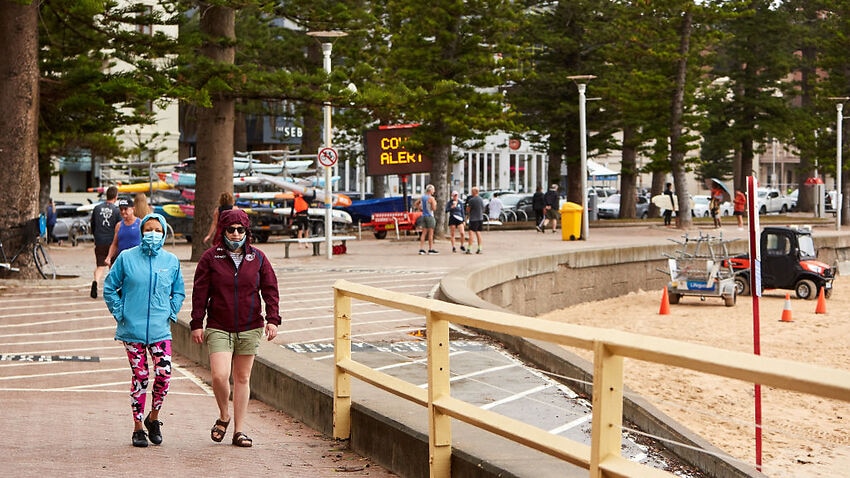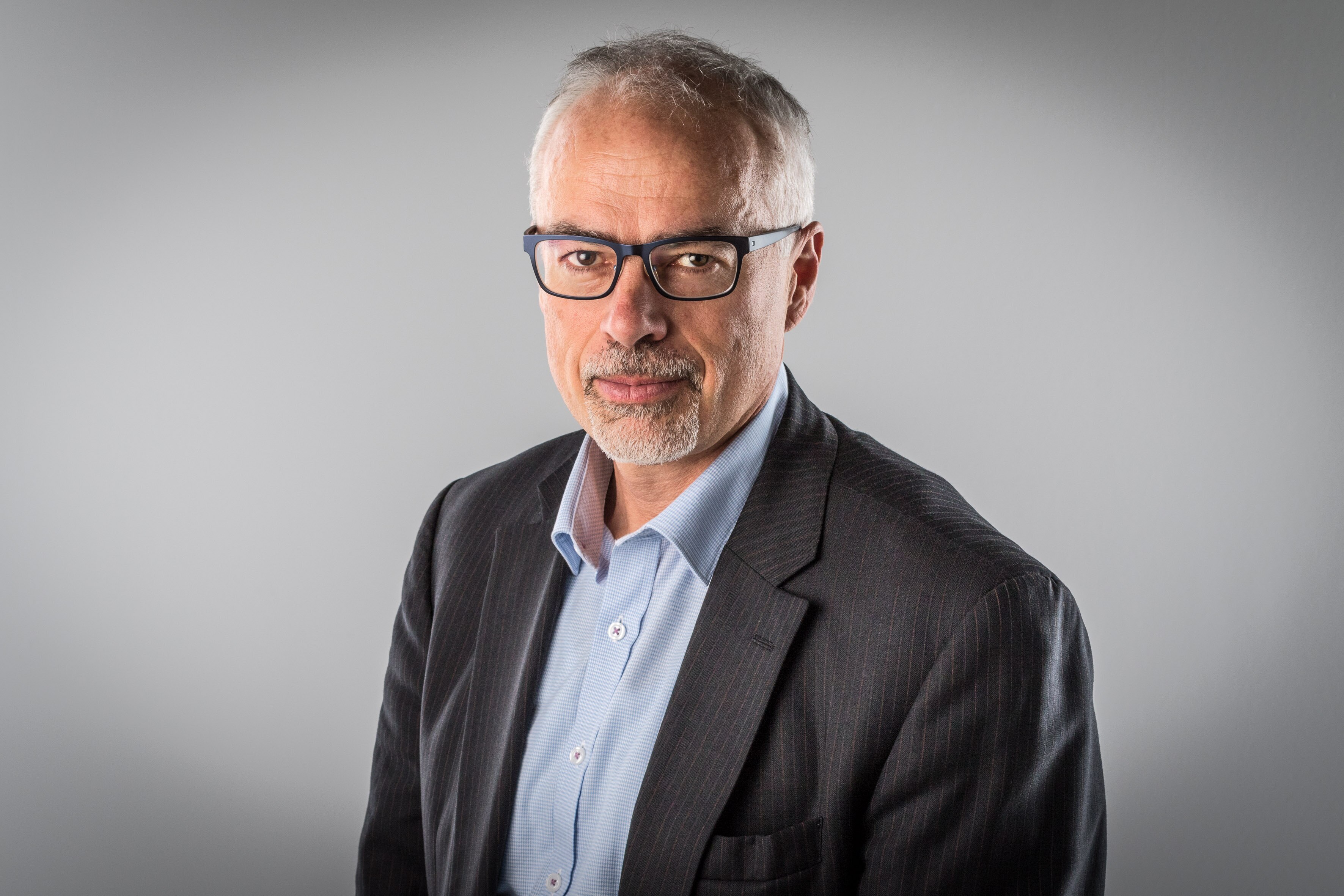Christmas Day and New Year’s Eve have the potential to be “disastrous” and “calamitous” super-spreading events, according to epidemiologists who say the current lockdown on Sydney’s Northern Beaches may not be enough to contain the outbreak.
The cluster grew to 70 cases on Sunday, after 30 new positive tests were returned overnight.
The majority of the new cases – 28 – were linked to the Avalon cluster, with the two remaining cases, both in Northern Beaches residents, yet to be identified.
Northern Beaches residents are under strict stay-at-home orders until midnight on Wednesday. NSW Premier Gladys Berejiklian has said it’s possible the current restrictions could be extended beyond that date, with a final decision to be made on Wednesday.
Dr Tony Blakely, an epidemiologist and public health specialist from the Melbourne School of Population and Global Health, describes the current lockdown as a “holding pattern” that will need to be extended until after the new year.
“They might loosen things up a little on Christmas Day and then tighten up again – [that] would be my pick. Those northern suburbs I think need to stay isolated from the rest of the country and therefore the rest of Sydney until at least after New Year,” he told SBS News.
It could take up to four weeks at least to get the case numbers down to elimination, he added.
UNSW epidemiologist Professor Raina MacIntyre says the current cluster differs from Sydney’s Crossroads Hotel outbreak in July because we can “predict with 100 per cent certainty” that there are two upcoming super-spreading events on 25 and 31 December.
“We know for a fact that there will be people who will get infected on Christmas Day who will be at their peak of infectiousness on New Year’s Eve … the mother of all super-spreading events,” Prof MacIntyre told SBS News.
“Say we have 40 new cases tomorrow – unchecked, that will be 120 new cases on Christmas Day, 360 new cases on New Year’s Eve and over 1,000 new cases by the first week of January.”
Our chances of overcoming the outbreak would be improved if the lockdown took in the whole of Greater Sydney and was extended until at least Christmas Eve, Prof MacIntyre said.
“I think we can try to salvage Christmas Day and try to still have celebrations but to do that, a short sharp lockdown across Greater Sydney would be wise,” she said.
“Then [we] reevaluate it on Thursday, and if the numbers have gone down to single digits that’s a really good sign. But if they haven’t, what I’m most worried about is New Year’s Eve.”
Australia’s acting Chief Medical Officer agreed the NSW government had used a “relatively soft touch” approach for Greater Sydney but health authorities in the state had “just about got it right” when it came to the speed of its response to the outbreak.
Professor Paul Kelly said that the outbreak remained “quite localised” at the moment but added the success of the Northern Beaches lockdown wouldn’t be known for weeks.
“Today, NSW has announced further measures for the wider Sydney area, that’s appropriate to decrease mixing and movement at this time,” Prof Kelly told reporters on Sunday afternoon.
“The virus moves with people, if we can limit the moving of people and mixing of people that have moved around, that really helps with decreasing the transmission of the virus.
Anxious wait for Greater Sydney
Our chances of a “normal summer” in January depend on how well the cluster can be contained to the Northern Beaches, Dr Blakely says.
Given it’s the festive season when people are mixing, this seems unlikely.
“So far it feels like we’re dodging bullets. But there must be some cases that have sneaked out there,” he said.
If cases do pop up in other parts of the city, Greater Sydney will have to be partitioned from the rest of Australia, he added.
“If we do see those cases over the next couple of days outside of the northern suburbs, I do think there’s going to need to be dramatic action taken in the whole Greater Sydney area to just dampen down the Christmas experience,” Dr Blakely said.
These will include smaller gatherings and celebrating the day outdoors, so the weather forecast could be crucial. Currently there is a 50 per cent chance of rain on Christmas Day.
“Having a full blown Christmas experience in Sydney if cases have got out could be a disaster,” Dr Blakely said.
‘Bonkers’ lack of rules on masks
Experts have criticised NSW’s lag in implementing lockdown measures, delay in increasing social distancing restrictions and failure to mandate mask-wearing.
“We’ve seen a lag in the lockdown, we’ve seen a lag in moving back to four square metres and other things. They’ve all happened on Sunday – that’s good, but they probably should have happened 48 or 72 hours ago,” Dr Blakely said.
The fact masks aren’t mandatory is “bonkers”, he says.
“Us people in Victoria are scratching our heads, as is the rest of the epidemiology community, as to why masks are not mandatory.
“It just seems bonkers. It doesn’t cost anything to do it, it keeps more businesses open, it’s a bit of a hassle to do it but frankly if you had everyone in Sydney wearing masks at the moment when they’re outside or in a busy environment, for those places where COVID has seeded, it may mean we never see it.
Prof Macintyre says voluntary measures are typically greeted with about 50 per cent compliance.
“I think if we went with a mask mandate and streamlined the QR codes to make them fully automated, so you don’t have to type details on a website and you can just touch and go, that would all help greatly,” she said.
“Given the seriousness of what’s lying ahead of us with Christmas and New Year’s Eve and the potential for really calamitous outcomes as a result, I think we should be safe rather than sorry.”
Slow return to normality
Dr Blakely and Prof MacIntyre agree the states’ decisions to close borders to those in the Northern Beaches and Greater Sydney and implement mandatory quarantine were the right ones, despite the pain of separation many families are experiencing.
“You have to close those borders off because if the cases have seeded out into Sydney and Christmas causes an explosion that will quickly spread around the country,” Dr Blakely said.
“It’s unpleasant and it’s unfortunate at this time of year but frankly, we’ve got no choice.”
Normality will only be achieved through a vaccination program that can achieve herd immunity, Prof MacIntyre says.
“If we have a vaccine that has 90 per cent efficacy or greater we can achieve herd immunity – which means that we eliminate the infection in Australia – that’s when we can return to normal and what we should be aiming for.”
Until then, Australians will remain at risk from infections carried in on international flight arrivals and breaches in policy that seed clusters.
Johns Hopkins University reported almost 620,000 cases and 10,686 deaths worldwide on Saturday.
Dr Blakely says the quickest way to protect the Australian community is to vaccinate border and quarantine staff first.
“That will stop what’s happening in Sydney at the moment because it won’t get out. And when we slowly vaccinate [everyone else] we’ll get back to something that’s normal again by the end of next year,” he said.
“Next year is going to be better, because we’ve learned how to manage this, but not best.
“I’m looking forward to 2022.”
People in Australia must stay at least 1.5 metres away from others. Check your jurisdiction’s restrictions on gathering limits. If you are experiencing cold or flu symptoms, stay home and arrange a test by calling your doctor or contact the Coronavirus Health Information Hotline on 1800 020 080.
News and information is available in 63 languages at sbs.com.au/coronavirus
Please check the relevant guidelines for your state or territory: NSW, Victoria, Queensland, Western Australia, South Australia, Northern Territory, ACT, Tasmania








